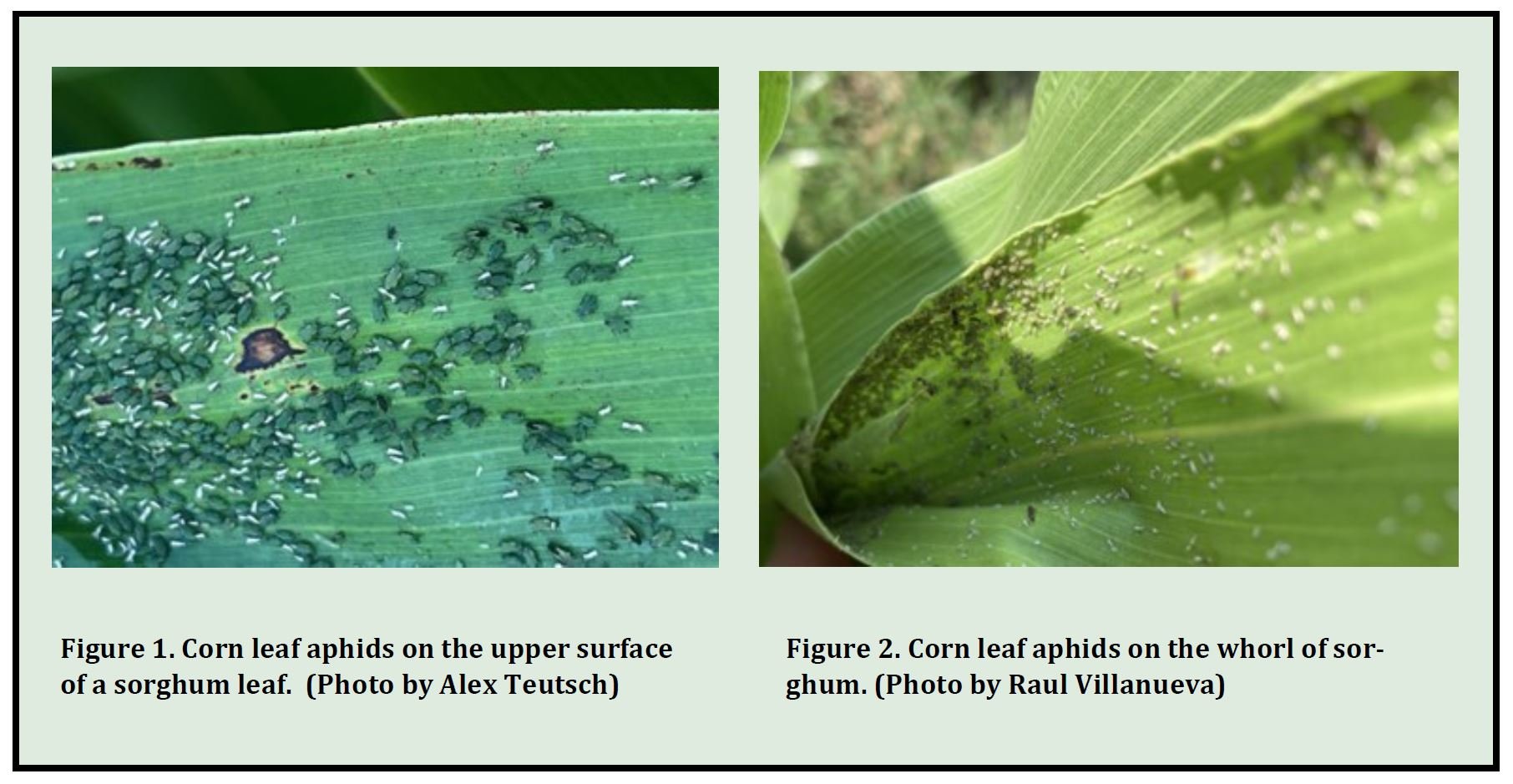Misidentification of Corn Leaf Aphid May Have Caused Some Concern to Sorghum Growers
The corn leaf aphid, Rhopalosiphum maidis (Hemiptera: Aphididae), is a native insect and is present across the entire United States and in Canada. This insect feeds on corn, sorghum, small grains, and several grasses. Population outbreaks occurred some years, but they hardly cause significant damage in corn or sorghum. In small grains, high populations can occur in the fall or early spring, this insect vectors barley yellow dwarf virus.
These aphids vary from bluish grey to green and they occur in very dense clusters on plants (Figure 1) or whorls (Figure 2). Aphids in these cluster are composed by wingless specimens, but under heavy aggregation, winged individuals appear to move to new sites.
In Kentucky, in 2022, several reports on corn aphid presence occurred since mid-June in corn and sorghum. Heavy feeding on young plants can stunt plants, and in some fields of forage sorghum, this may have especially happened in areas under drought this year.
While feeding, aphids excrete a substance known as "honeydew." The accumulation of this sticky material enhances the presence of a black sooty fungus that develops and thrives on the honeydew excreted by the aphids.
The havoc caused by the sugarcane aphid (Melanaphis sacchari) (Figure 3) in all types of sorghum since 2013 causes some anxiety or concern to sorghum growers, and some farmers in 2022 were ready to pull the trigger to control the corn leaf aphid. However, this is not the sugarcane aphid. Many growers were able to recognize the pest (or consult county Extension agents and other consultants) and avoided an unnecessary expense. Corn leaf aphid rarely causes economic losses, and they are controlled by several natural enemies (lady beetles, syrphid fly larvae, parasitoids, entomopathogens, lacewing adults, and larvae) or environmental conditions, such as heavy rains.
More information:
Corn Leaf Aphid, University of Kentucky
Corn Leaf Aphid on Field Corn, PennState Extension
Status of Several Aphid Species in Grain, Forage, and Sweet Sorghum in 2021, KPN - University of Kentucky
Sugarcane Aphid: Occurrence in August 2017, Misidentification, and Insecticides Registered for Grain, Forage and Sweet Sorghum. KPN - University of Kentucky



